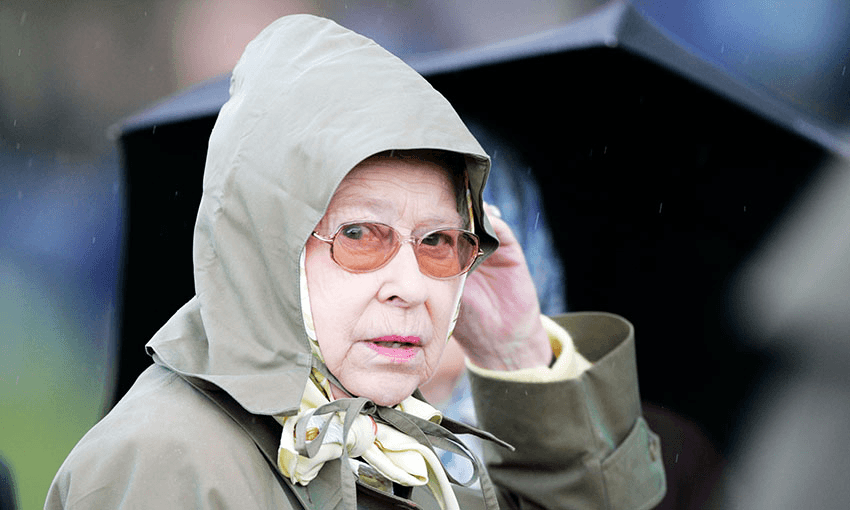All week this week we feature tangata whenua writing to mark Waitangi Day on Wednesday. Today: in this extract from a book of essays, Morgan Godfery wonders exactly what the point is of New Zealand bowing to a monarch “of a rain-soaked island off the north-western coast of the European mainland”.
One of my earliest memories is, for some bizarre reason, of a heavy-eyed old woman hanging in a cheap brown frame in my ancestral Marae.
Most days the old photograph would hang 45 degrees off-centre on the back wall. Other days it wasn’t there at all. During the annual visit from Te Ātairangikaahu, the then Māori Queen, the old blokes on the speaking bench would turn to the photograph and recite a history I didn’t understand.
It was all very puzzling for a five-year-old. The wharenui on any Marae is where the hapū’s history comes to life, where every carving and photograph tells an origin story, but the old woman would hang from the back wall alone. She wasn’t connected to any family. Nor was she some ancient ancestor. As far as I could tell she wasn’t a deity. She seemed to function as a prop rather than a person.
Things didn’t make any sense until the photograph of the old woman vanished. In her place someone framed a copy of the Crown’s formal apology to Ngāti Awa. “The Crown profoundly regrets and apologises unreservedly for the breaches of the Treaty of Waitangi,” the text read. I remember thinking: this is more uplifting than the old photograph of a stony-faced Queen Victoria.
It took me 15 years to figure out the old blokes on the speaking bench were reciting the whakapapa of the Treaty, all the way to its putative guarantor, Queen Victoria. Removing her photograph meant making a psychic break with the broken promises of the Treaty. Replacing it with the text of the Crown’s apology meant acknowledging the possibility – the promise – of a new Treaty relationship.
I sometimes wonder why we can’t do the same with our head-of-state arrangements. Isn’t it odd that “the Queen in right of New Zealand” lives 18,000 kilometres away, in a palace built from Jurassic limestone? Nothing says “modern New Zealand” like the monarch of a rain-soaked island off the north-western coast of the European mainland.
I suppose it’s obvious I’m a partisan for a local and elected head of state. Not just for practical reasons, or even symbolic ones, but simply out of honesty. New Zealand is not feudal Britain. I struggle to summon any affection for a person who makes £304.1 million per year for no other reason than her exalted bloodlines.
The politics of envy! Maybe I’m a bitter hack, but given the argument for constitutional monarchy so often seems to amount to nothing more than ‘symbolism’ and ‘special relationship’, it seems appropriate to state just what the monarchy represents – inherited wealth and power.
But perhaps this is too simple. You can, after all, argue constitutional monarchies are the most stable form of government. This is a favourite of the Australian monarchists, though it strikes me as a category error. The stabilising force in Australia and New Zealand is parliamentary democracy, a form of government that can exist independently from any monarchy.
The simple truth is that nearly every other democratic society operates under a written constitution with an elected head of state. The strange irony is that Britain, even as she celebrated the genius of her own “unwritten” constitution, insisted that nearly every one of her colonies adopt a written constitution and a local head of state at independence.
But New Zealand, a country founded on a sacred pact between Māori and the Crown, is different. Or so we’re told. In truth, the Treaty relationship between Māori and the Crown was never a relationship between hapū and the monarch. It’s a relationship between you and I as tangata whenua and tangata tiriti.
The question I keep returning to is whether our institutions not only serve us but look like us. If we accept the idea that the special relationship in this country is between tangata whenua and tangata tiriti, not between colony and Crown, then what is the monarchy but a dust-covered photograph of Queen Victoria on the back wall of a small-town Marae?
Māui Street by Morgan Godfery (Bridget Williams Books, $15) is available at Unity Books.

